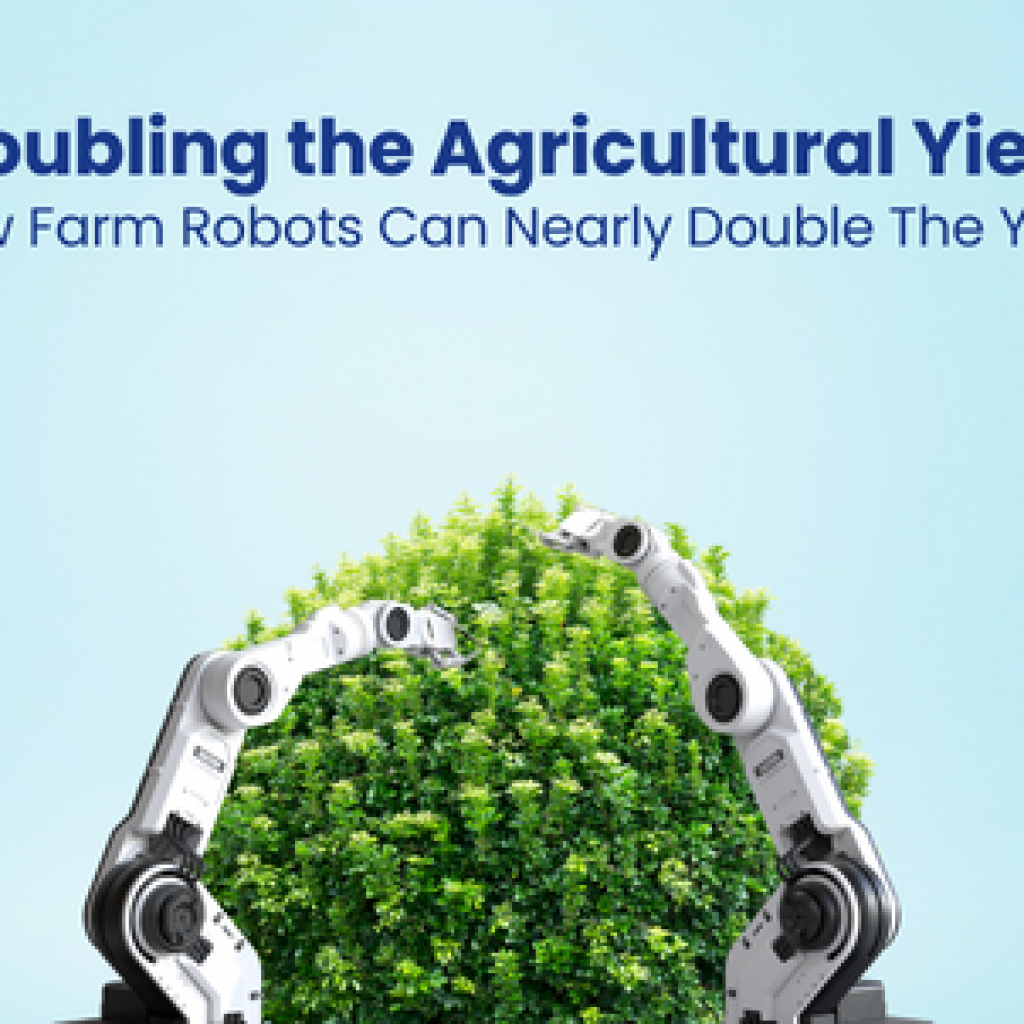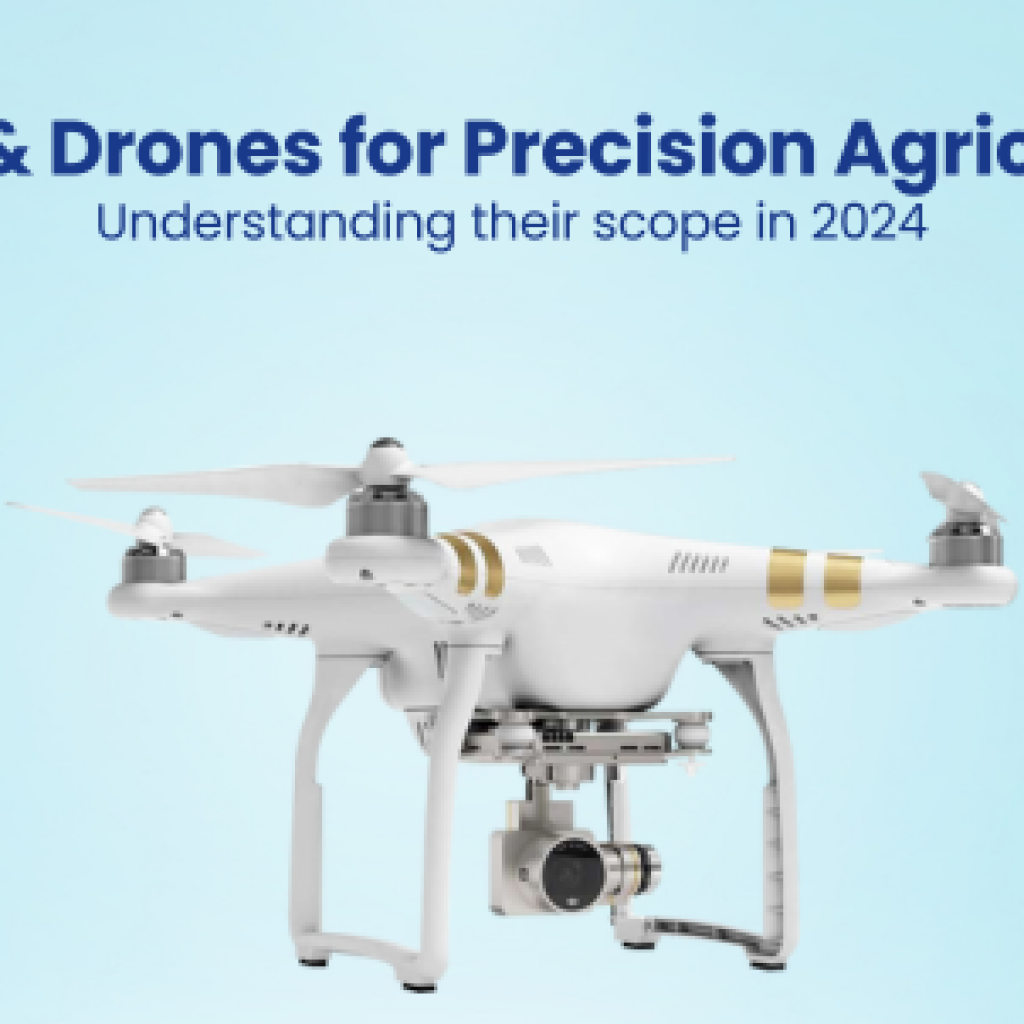A United Nations report states that up to 40% of yearly global crop production is lost to pests. Plant diseases cost the world economy over $220 billion, and pests approximately $70 billion. These devastating losses exacerbate farmers’ hardships and cause a scarcity of high-quality food. Fortunately, artificial intelligence proves to be a powerful ally for practical pest control applications in agriculture.
Agtech innovators can detect and forecast pest-induced losses in agriculture using AI for pest management. Field tests have shown that AI solutions can detect insect pests, such as flies & moths, and microbial pests, too! This article details some notable inventions and instances of AI-powered agricultural enhancements in pest detection.
To get a more comprehensive report on notable agriculture technology trends for 2026, please access the report below.

Agriculture Innovation Trends for 2026
Read The ReportHow Generative AI Saved Crops from Microbe Infestation
In 2017, several unidentified pest attacks caused rampant crop failures in India. Many farmers had to abandon their profession as it could not sustain them anymore. Three students from VIT-Chennai Campus rose to the occasion to defeat this invisible foe.
Using Intel’s OpenVINO™ technology, engineers Rishikesh Amit Nayak, Niharika Haridas, and Gideon Samuel Jacob developed a Microbial and Pest Outbreak Prediction System for Precision Agriculture.
It’s called Kishan Know, among the winners of Intel’s AI Global Impact Festival 2021.

Pests, even microscopic ones, have thermal traces. Though the thermal data is insufficient to paint a clear picture of the pests, it is good enough to detect their presence. The leaves of plants themselves create heat traces due to some hormones. Kishan Know uses satellite imagery and biological data from sensors to detect plant diseases.
The farmers would have to move around the field carrying the device, particularly in the perimeter where the pest attacks first occurred, to take thermal images of the crops. The inventors recommend this activity twice daily, once in the morning and again in the evening.
Once they analyze the collected data using AI, any change in the plant temperature would indicate a particular pest or bacterial attack in the field, prompting the farmer to take remedial measures.
This method has proven effective and costs less than $1. Further, it’s accessible to every strata of the farming community.
While this project was only executed in a local community, we deemed the method & results noteworthy enough to highlight in our report.
Recommended reading: Keep an eye on these 10 Startups using AI in Agriculture in 2024
Using Machine Learning for Insect Pest Detection
Farmsense, a California-based agtech startup, is solving the insect pest problem. They use optical sensors and classification systems using machine learning algorithms to detect and track insects in real time.

Credit: Farmsense
Typical mechanical traps take 10 to 14 days after the bugs arrive to provide useful data. Some insect varieties only live as adults for approximately five days, rendering mechanical traps useless. Farmsense enables instant remedial measures.

Farmsense’s optical sensor, called FlightSensor, helps farmers identify pests within moments and mitigate damage from harmful insects. The sensor uses light curtains and shadows within a small tunnel. This tunnel contains attractants that draw the insects into it.
There’s a light source on one side and an optical sensor on the other. The sensor measures how much light is obstructed and how much light makes it across when an insect flies inside. That data turns into audio and is analyzed by machine learning algorithms on a cloud-based system.
Instead of other implementations that use vibrations, this sensor does not pick up ambient noises, such as wind or rain, providing more accurate results. FlightSensor is weather-resistant, automated, and energy-independent.
The company plans to bill its customers per season for approximately $300. While the price may initially seem steep, we consider them a substantial innovator. And we’re not alone in that thought.
On October 2, 2023, Farmsense won a grand prize of $750,000 in the 2023 Radicle Inclusion Challenge presented by Nutrien. They were one of the two winners chosen among 190 agriculture-focused startups from around the globe. The company has raised $2.2 million over six funding rounds since its inception.
Insect infestations are projected to increase by 36% by the year 2050. Inventions like Farmsense’s FlightSensor would be one of the best options for farmers to detect and eliminate these pests quickly.
Trapping Insects using Artificial Intelligence!
Trapview, not unlike FarmSense, is another AI startup that produces AI-powered insect traps to detect and forecast pest infestations on farms.
The company’s invention traps insects by attracting them using pheromones. It then uses built-in cameras to record photographic data of pests. These images are sent to their cloud servers to be processed, and clear-cut reports are produced for the farmers, recommending further actions.
“We’ve built the biggest database of pictures of insects in the world, which allows us to really use modern AI-based computing vision most optimally.”
– Matej Štefančič, CEO of Trapview
The company claims these devices can be tailor-made to suit the specific crop and the terrain surrounding the farmland. This trap is designed to act as an alert system capable of detecting even one problematic insect entering it. Even a hundred shouldn’t trigger an alert if the insect variety is not deemed harmful.
Using your Smartphone Camera as a Microscope through AI

GoMicro, a South Australian agtech startup, has developed a way to detect pests and plant diseases with low-cost AI technology. They’ve designed a phone-attachable, clip-on magnifier that works on any cellular device.
The company’s software can detect pests and diseases accurately in the early stages of development, significantly reducing the need for chemical remedies. Furthermore, it can also assess the quality of produce, making it possible for farmers to meet consumer expectations.
The AI analyzes the macro image captured through your smartphone’s camera to distinguish distorted grains from good ones. Additionally, it can identify field fungi, severely damaged grains, sprouted grains, and white grain disorder.
The company plans to launch $1 versions of the attachable microscope accessory with AI software for farmers’ smartphones. In addition to fruits and grains, they extend their solution to detect seafood spoilage along the supply chain. Evidently, the pocket computers we all carry can accomplish a lot using very little augmentation.
Want to learn more about the scope of AI in agriculture? We’ll produce a comprehensive landscape analysis report for you. Contact us using the simple form below!
Get in touch
Please share your query below
Pest Detection In Horticultural Crops Using AI
Plant Phonemics researchers from the University of Barcelona and Agrotecnio developed a smartphone application that detects early-stage diseases in horticulture crops. The app, called Doctor Nabat, is a project aimed at providing an early response to prevent the loss of crops. This project development involved working with Dubai’s International Centre for Biosaline Agriculture (ICBA).
The farmer takes a picture of the crop through the app to start the diagnosis. Its algorithm uses deep learning to analyze 25,000 photographs of diseases, abiotic stresses, and nutritional deficiencies uploaded to its repository against the photo taken. The app then gives a precise diagnosis and the probability percentage of the detected pest or disease.
It also recommends and guides the farmers on treatment procedures. The newest version suggests solutions to remove pests with ecological fertilizers. The best aspect of this solution is that it does not need specialized hardware.
While we recognize it’s much slower than dedicated IoT sensors distributed across a large field, a smartphone app is a great way to introduce small farmers to use AI technology without hefty upfront investments. We highly recommend testing the “free app” route to onboard early adopters to your project and establish trust among farming communities.
See how GreyB did it
Advantages Of Using AI for Pest Detection In Agriculture
1. Reduced use of pesticides
A study published by Nature Geoscience found that 64% of global agricultural land (24.5 million square kilometers) is at risk of pesticide pollution from multiple active ingredients, and 31% is at high risk. AI can help ease this problem.
Farmers can precisely detect the type of pest infestation and the affected area using these AI solutions. They need only use limited pesticides on that part of the farm, minimizing the impact on the soil and environment. Furthermore, as these solutions evolve, the AI models can be tuned to be more environmentally conscious and recommend safer pest control measures sooner.
2. Increased Efficiency
An AI-powered pest detection system can alert farmers to incoming pest infestations in real-time, enabling them to take swift action and effectively save their crops. Additionally, the remedial measures these AI systems recommend are precise and data-backed, helping farmers solve the pest problem better than traditional measures often driven by guesswork.
3. Lower Costs of Pest Control
As discussed before, AI-powered remedies require fewer pesticides and reduce the need for frequent human intervention, thereby saving time and resources. Nearly all innovators we discovered understand the farming community’s concerns around the initial costs of new farming solutions. They’re actively ensuring their products are accessible to every farmer in need, regardless of the farm size.
Future Outlook
The future of AI in agriculture, particularly for pest detection, looks promising. Research reveals a massive $65 billion opportunity in agriculture, achievable by enhancing its foundational areas, such as logistics, storage, and pest management.
Efficiency, impact on the environment, and cost of implementation remain the most significant barriers delaying the widespread adoption of AI in agriculture. However, core facets of AI, such as deep learning, constantly evolve and become more effective.
In addition to pest control, artificial intelligence can significantly enhance crop yields by mimicking natural pollination! Read our report below on the innovative companies using AI for crop pollination management in agriculture.










